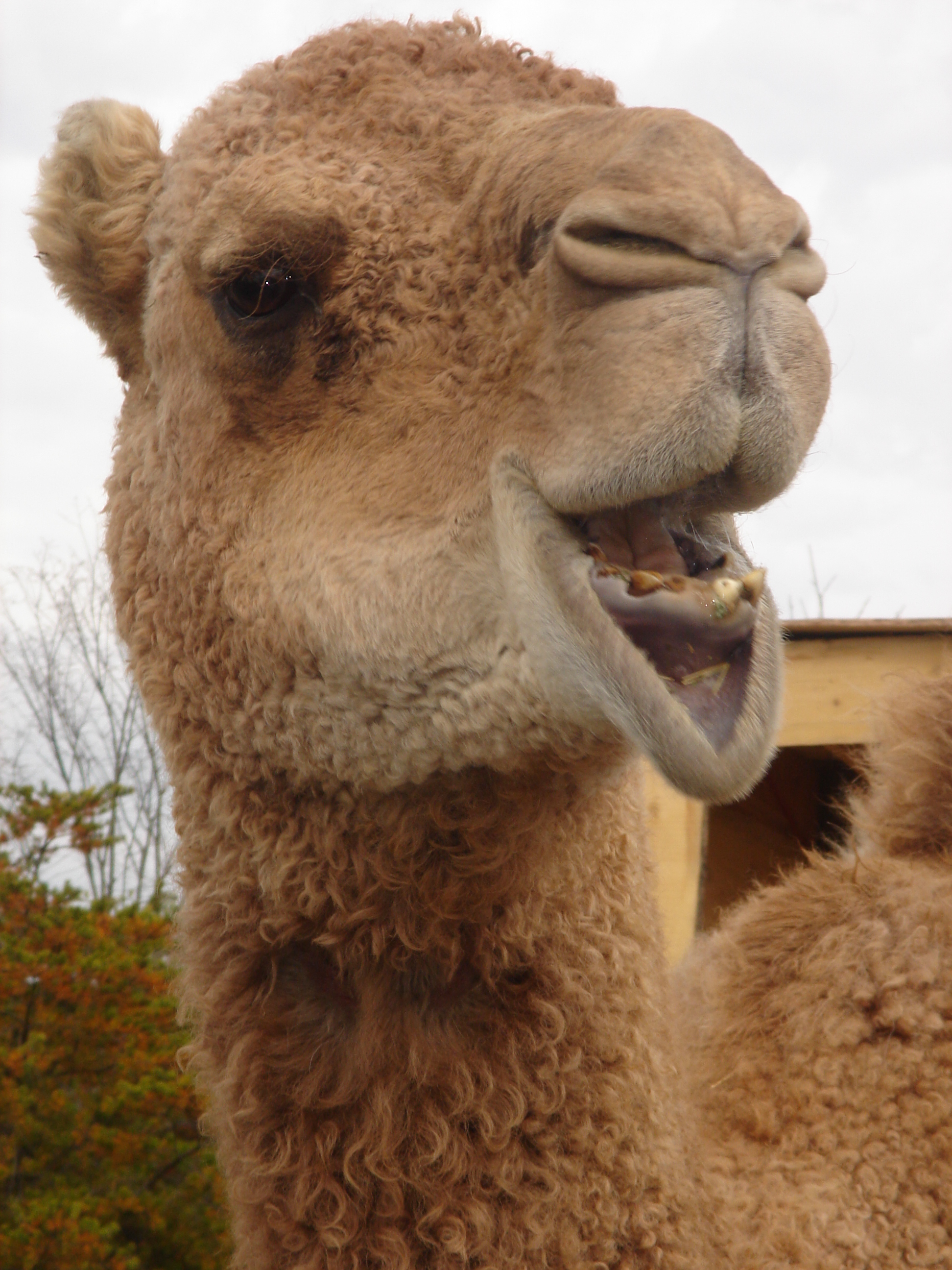Youngsters may be getting giddy visualizing reindeer streaking Santa across the sky, but how about a Christmas camel for some excitement? A dromedary camel named Aladdin is a little-known holiday delight at Mount Vernon Estate until Jan. 7.
 Aladdin
Aladdin
Aladdin is a 16-year-old camel that measures about seven feet from his hoofs to the top of his bump, a long-legged ungulate or hoofed animal native to the other side of the globe. He seems quite at home loping around his pen and eyeing visitors in a field at the west end of Mount Vernon’s bowling green.
Mount Vernon’s managers have hosted Aladdin during the winter holidays since 2008 because in 1787, George Washington brought a camel to his plantation. He recorded in his ledger, “By the man who brot. A Camel from Alexa. For a show.” Washington paid 18 shillings which today would be $170.
In the 18th century, itinerant entertainers traveled the eastern part of the country with rare or specially trained animals and Washington had a great interest in animals. He recorded seeing a tiger, a “Lyoness” in 1766 for 10 shillings, a “Cugar” and “Sea Leopard” in Philadelphia while President. In Washington’s day, these animals had to be rare sights.
The online Britannica encyclopedia says that a camel is “any of three species of large ruminating hoofed mammals of arid Africa and Asia known for their ability to go for long periods without drinking. The Arabian camel, or dromedary (Camelus dromedarius), has one back hump, while the domesticated Bactrian camel (C. bactrianus) and the wild Bactrian camel (C. ferus) have two.” Dromedary camels have an average lifespan of 40 years.
Aladdin has golf-ball-size dark brown eyes, two- to three-inch eyelashes and sandy brown fur that thickens up in the winter. He first came to Mount Vernon in 2008 at age 11 months. He eats hay and four to five pounds of grain and drinks five to ten gallons of water daily.
He is domesticated and generally appears to be very docile. Because he was bottle raised, “He can get mouthy,” commented Lisa Pregent, senior livestock manager, adding, “He’s very loved.”
Aladdin lives in Fairfax Station the rest of the year and travels to Mount Vernon in a horse trailer. “We are camel-sitting,” jokes Pregent. She observes that when he was younger, he was “very animated,” but now has “mellowed out.” She thinks he is “goofy,” when he “flips his lip.” He’s been known to chomp off a visitor’s hat if the person gets too close.
Pregent has been caring for Aladdin for his 15 years there, along with the estate’s cows, horses, pigs, sheep and chickens. Taking care of a camel is “a learning process every year,” she commented on Nov. 30.
Thousands of visitors check out Aladdin every year, many en route to their mansion tour, says Julie Coleman Almacy, Director of Public Affairs. On Nov. 30, a family of five from Honolulu were captivated. “He’s so cute,” said Abigail Beahler, age six.
As Pregent fed him grain from a purple bucket, Abigail's sister, Suzanne, age 10, said, “He’s like me. He has a bottomless stomach.”
Here’s an interesting historical twist: George Washington’s farm managers were probably not familiar with camels, but some of the plantation’s enslaved people might have been, having encountered them in trading caravans in Africa before their enslavement in North America.
Information:
https://www.mountvernon.org/plan-your-visit/things-to-do/animals/aladdin/
